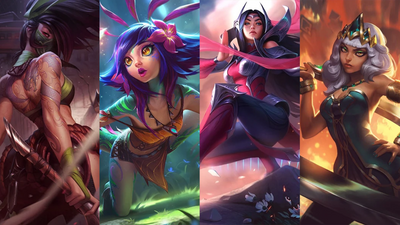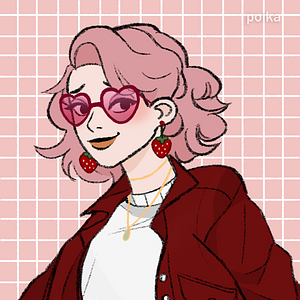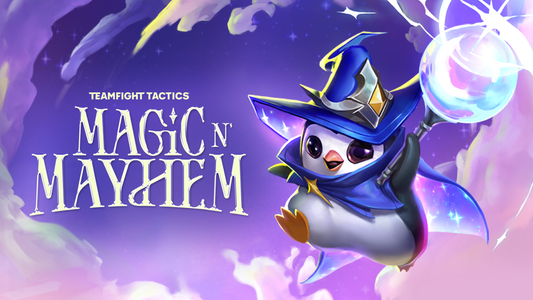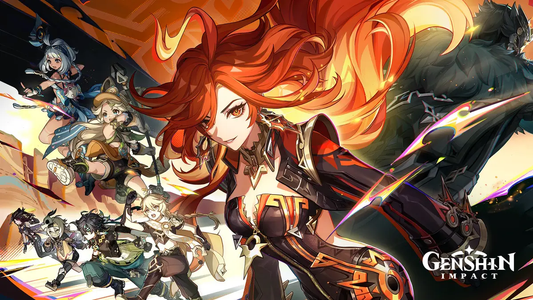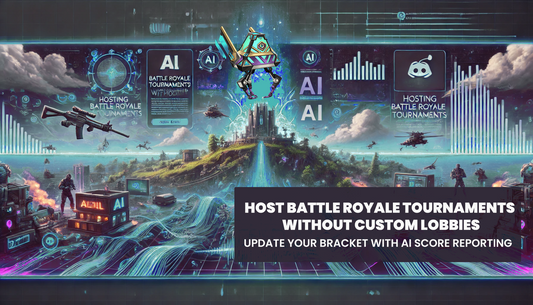Want to give Teamfight Tactics a try, but can’t tell an Ahri from a Ziggs? Look no further, here’s our guide to picking up the game.
TFT Basic

Teamfight Tactics is an autobattler game developed by Riot Games, set in the world of Runeterra (the setting of League of Legends and Arcane). You’ll draft a team of champions, position them on your board and empower them to fight against other players. Champions are purchased with Gold, which is earned at the end of each round. Players start with 100 Health, and take damage depending on when in the game they lose combats. Losing a combat early may only deal 5 or so damage, while losing a combat towards the end of a game can deal 15 or more damage!
Each round, you will be presented with a fresh shop of 5 champions. Champions can range from costing 1 to 5 Gold, with their power levels varying based on their cost. Champions have between 1 and 3 Traits, which are often shared with other champions. These Traits provide bonuses when paired with other champions that share that Trait. Almost all strategies in TFT rely on having champions that share Traits on the board together. For example, in Set 12, having three Faerie champions on board will give you a Faerie Queen’s Crown, an item that can only be held by Faeries but gives a huge damage boost. At 5, 7 and 9 Faeries, you will get more items and the Crown’s damage boost will increase. Some champions have Traits that are exclusive to them - for example, in Set 12, Briar has the ‘Ravenous’ trait, allowing players to feed her 3 Player Health in exchange for boosting Briar’s Health.
Champions can be powered up by purchasing duplicates of them. Three 1-star copies of the same champion will automatically fuse together to make a 2-star copy of that champion, which is much stronger and gains increased health. Three 2-star copies of a champion will also fuse together, making an incredibly strong 3-star champion. On incredibly rare occasions, you may also be able to find a 4-star 1-cost champion, but we recommend not trying to go for this unless your shop is swarmed with that one particular champion.
Throughout the game, you will obtain items that can be equipped to your champions. These items come in two forms: component items and completed items. Component items give small stat boosts, while completed items give notable stat boosts and have powerful effects. You’ll earn component items frequently throughout the game, and can combine them into completed items by putting two on a champion at a time. For example, putting a Needlessly Large Rod and a Recurve Bow on a champion will combine them into a Guinsoo’s Rageblade, which increases the champion’s Attack Speed every time they attack. You’ll want to equip appropriate completed items on your strongest champions, and thankfully, the game shows you what kind of items are fitting for any individual character. Right-clicking on a champion will show you a bunch of information about them, including their ‘role’ or ‘class’ within the game. You can click or hover on this to find out more, including what kinds of items those champions might want to hold.
Economy

Much like real life, managing your finances is one of the most important parts of Teamfight Tactics. For every 10 Gold you have in the bank, you will earn 1 extra Gold next round, meaning that sitting on Gold can be very useful indeed. This normally caps out at 50 Gold (5 Gold per round), with a few special power-ups that increase this limit. Players call this micromanagement of their funds ‘Econ’, short for Economy. As you improve at the game, one of the key skills to learn is when to spend Gold and when to save it for Econ: sometimes, there’s no definitively correct answer!
Augments

At three different points during the game, on stages 2-1, 3-2 and 4-2, players will get a choice of Augments. These are huge power-ups that will shape each game, ranging from relatively simple Augments that give you items that empower certain traits, to absolutely bizarre Augments like ‘Anger Issues’ which transforms every item you get in the game into a Guinsoo’s Rageblade.
Some champions have Hero Augments, which are huge power boosts to that specific champion and often form the basis of a team composition. If you get one of these Hero Augments, it’s likely that you’ll want to be collecting as many copies of that champion as possible in order to get them to 3-star as quickly as possible.
The Augments you choose can make or break a game, so make sure to choose wisely!
Team Composition

Building a strong team in TFT can feel a bit like a jigsaw puzzle. We recommend focusing on a single trait or champion, and building around them. For example, focusing on 7 Faerie in Set 12, or focusing on Varus as a carry champion. Picking several ‘carry champions’ to give your items to instead of spreading them super widely can also be very beneficial. Check out some of our resources below for suggestions on strong team compositions right now.
Resources

Now that we’ve kickstarted your adventure in Teamfight Tactics, here are some great resources to learn the game at a higher level, or to accompany your games.
Download TFT here - https://teamfighttactics.leagueoflegends.com
MetaTFT - Fine-grained statistical analysis of different champions, items and more
TFT Academy - A great resource made by some of the best players in the world! Check out the Tier List section for guides to the best performing team compositions right now.
Boardle - Part of MetaTFT, this is a daily browser game that lets you predict which board will win in combat. This is a great way to get a good instinct for power levels in TFT!
That concludes our beginner’s guide to TFT! We highly recommend giving this game a shot, it’s a ton of fun and we absolutely adore it! Riot has something super special here, and there’s no better time to get into the game than right now.


